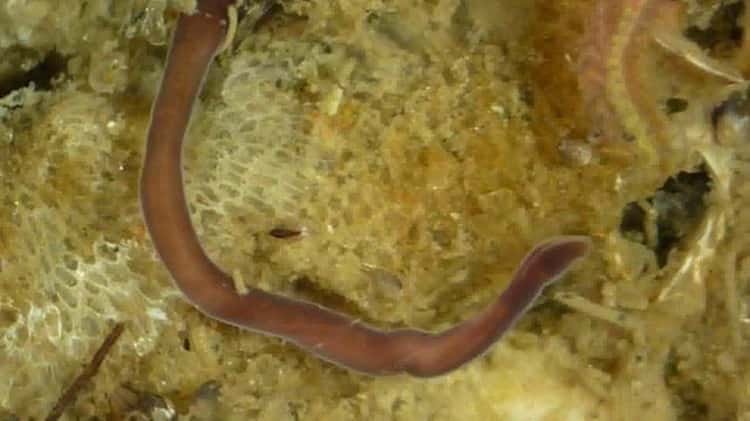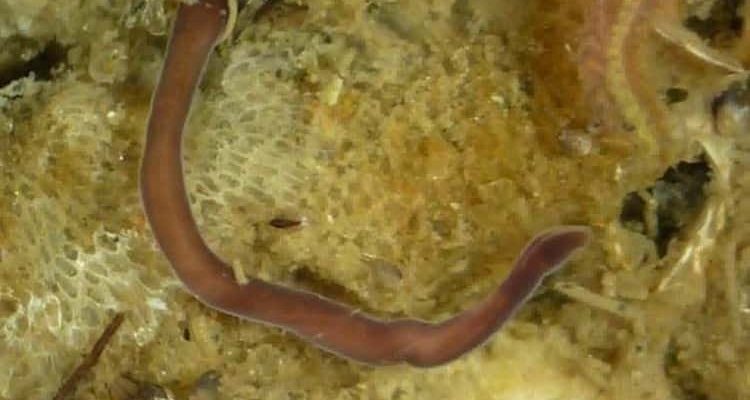
Imagine you’re at a family gathering, and you’ve got two very different relatives: one is a quiet, hardworking type who blends into the background, and the other is colorful and dramatic, often making a scene. That’s sort of how ribbon worms and annelid worms relate! Let’s dive into the fascinating world of these worms, comparing their features, habitats, and behaviors, so you can appreciate their unique roles in the ecosystem.
What Are Ribbon Worms?
Ribbon worms, or *Nemertea,* are a surprising bunch. They often catch the eye thanks to their long, slender bodies that can stretch quite far, sometimes reaching several feet in length. These creatures tend to live in marine environments, preferring sandy or muddy substrates where they can easily hide. It’s like they’re little ninjas of the ocean floor, quietly hunting for food while avoiding the spotlight.
Typically, ribbon worms have a fascinating feature: a retractable proboscis. This handy tool works like a fishing line, allowing them to snatch up prey such as small crustaceans and other soft-bodied animals with ease. When pondering their habits, it’s intriguing to think about how they get their meals in such an efficient manner, almost like a magician pulling a rabbit from a hat.
One of the coolest parts about ribbon worms is their ability to regenerate lost body parts. If they get cut in half, they can regrow the missing part. Imagine losing a finger and having it grow back overnight! This regenerative skill makes them quite unique in the worm world, adding a sprinkle of magic to their biology.
What Are Annelid Worms?
Now, let’s talk about annelid worms, which include the familiar earthworms you might find in your garden. Annelids belong to the phylum *Annelida,* and unlike their flashy counterparts, they come in various shapes and sizes, often with segmented bodies. Each segment is separated by a thin membrane, making them look like a string of connected beads. It’s this unique structure that helps them move efficiently through soil and water.
Annelid worms are incredibly diverse, with around 15,000 species! You can find them in almost every habitat, from ocean floors to freshwater lakes, and yes, even in your backyard. They play a crucial role in the ecosystem — helping to aerate the soil, break down organic matter, and recycle nutrients. Think of them as nature’s little gardeners, making sure the earth stays healthy and vibrant.
Unlike ribbon worms, annelids do not possess a proboscis. Instead, they use a combination of bristles or setae on their segments to help move and anchor themselves in the soil. This means that while they may not be as flashy, they are hardworking and essential to many ecosystems.
Differences in Anatomy
When it comes to anatomy, ribbon worms and annelid worms are quite different. Ribbon worms have a simple body structure without distinct segments, while annelids boast a segmented design that allows for improved locomotion.
– Body Shape: Ribbon worms are long and flat, often resembling ribbons fluttering in water. In comparison, annelids are more cylindrical and segmented.
– Movement: Ribbon worms use a slimy, undulating motion to glide through their environment, while annelids use the contraction and relaxation of their segments, along with their bristles, to inch along.
– Feeding Mechanism: The proboscis of ribbon worms is a standout feature. It can be extended to capture prey, adding a level of complexity to their feeding strategy that annelids lack. Annelids, instead, generally consume organic debris by ingesting soil and filtering out nutrients.
In summary, while both types of worms are fascinating, their anatomical differences highlight their unique adaptations to thrive in their respective habitats.
Habitat and Distribution
The habitats of ribbon worms and annelid worms also differ significantly. Ribbon worms are primarily found in marine environments. They enjoy living in shallow waters, particularly among sandy beaches, mangroves, or estuaries. You might spot them if you’re exploring tidal pools, where they can sometimes be seen wriggling among the rocks.
Annelids, on the other hand, enjoy a broader range of environments. They inhabit freshwater, saltwater, and terrestrial ecosystems. Earthworms, the well-known inhabitants of our gardens, aerate the soil and improve its quality, while marine annelids often live in the ocean’s depths.
This difference in habitats is crucial for understanding their roles in the ecosystem. Ribbon worms are more specialized, often relying on specific conditions to thrive, while annelids are versatile, able to adapt to and benefit a variety of environments.
Reproductive Methods
When it comes to reproduction, both ribbon worms and annelid worms take different routes. Ribbon worms reproduce mostly through a process called *external fertilization*. This means they release their eggs and sperm into the water, where fertilization occurs. It’s somewhat like throwing seeds into a garden; some will take root, and some won’t.
In contrast, many annelids exhibit a variety of reproductive strategies. Some reproduce through regeneration, where they can create new individuals from fragments of their bodies. Others partake in a process called *clitellate reproduction*, where they form a cocoon around fertilized eggs that will eventually hatch into baby worms.
The breeding habits of both types of worms show how they have adapted to their environments and life cycles—a testament to nature’s creativity!
Ecological Importance
Both ribbon worms and annelid worms play significant roles in their ecosystems. Ribbon worms, as predators, help maintain the balance in marine food webs. By keeping populations of smaller prey in check, they contribute to the overall health of their marine environments.
Annelid worms, particularly earthworms, are vital for soil health. They break down organic material, creating nutrient-rich soil that supports plant life. Their burrowing helps aerate the soil, allowing water and nutrients to reach plant roots more effectively.
This ecological dynamic isn’t just fascinating; it underscores how interconnected life is. Each worm, whether ribbon or annelid, does its part to sustain the delicate balance of nature.
So, what’s the takeaway from comparing ribbon worms to annelid worms? Honestly, while they may seem similar at first glance, these two types of worms showcase the incredible diversity of life. Ribbon worms are the flashy, specialized hunters of the ocean floor, while annelids are the hardworking gardeners of both land and water. Each one has its unique features, habitats, and roles, contributing to the health of our ecosystems.
As you explore the natural world, remember that there’s a whole society of creatures working behind the scenes, from the smallest microbes to these intriguing worms. Next time you spot a worm, whether in the garden or by the ocean, consider the fascinating life it leads—a simple creature making a big impact.

